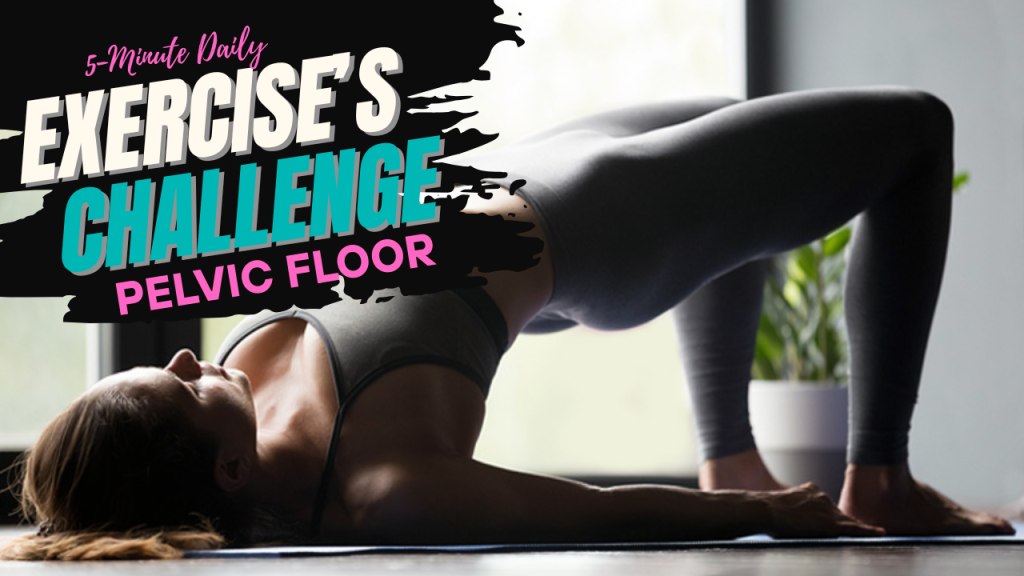Are you tired of sneezing and hoping for the best? Feeling disconnected from your core? Or simply looking to improve your intimate health, posture, and overall strength? If so, the Pelvic Floor Exercises Challenge may be exactly what your body is calling for.
This 10-minute daily routine is designed to strengthen the often-overlooked foundation of your body: the pelvic floor. And trust us — the results go far beyond what meets the eye. Whether you’re a busy mom, a fitness enthusiast, or someone recovering postpartum, these powerful exercises are for everyone. It’s time to take your wellness into your own hands — no equipment needed.

What is the Pelvic Floor, & Why Does It Matter?
The pelvic floor is a group of muscles located at the base of the pelvis. Think of it as a hammock that supports your bladder, uterus (in females), rectum, and bowels. These muscles play a critical role in:
- Bladder and bowel control
- Core stability and posture
- Sexual health and function
- Childbirth recovery
- Preventing pelvic organ prolapse
Weak pelvic floor muscles can lead to leakage, lower back pain, and even reduced confidence. The good news? They can be trained — just like any other muscle group.
Why Join the 10-Minute Daily Challenge?
This challenge is more than just a fitness goal. It’s about building awareness, improving control, and feeling empowered. A few compelling reasons to start:
- Only 10 minutes a day.
- No equipment is required.
- Beginner-friendly.
- Noticeable results in 2–4 weeks.
- Improved quality of life — physically, emotionally, and sexually.
Your 10-Minute Daily Pelvic Floor Routine
Here’s a simple and effective routine to follow every day. You can do this routine lying down, seated, or even standing.
Minutes 1–2: Breathing & Awareness
- Sit or lie down comfortably.
- Take deep belly breaths — inhale for 4 seconds, exhale for 6.
- Focus on relaxing the pelvic floor as you inhale and gently lifting it on your exhale.
This primes your nervous system and brings mind-muscle connection.
Minutes 3–4: Kegels (Slow Holds)
- Tighten the muscles as if you’re stopping urine flow.
- Hold for 5–8 seconds, then relax for the same duration.
- Repeat 5 times.
Builds endurance and improves control.
Minutes 5–6: Quick Flicks
- Contract and release the pelvic muscles quickly.
- Aim for 10–15 reps.
Trains the muscles to react faster, which is helpful for sudden pressure like sneezing or coughing.
Minutes 7–8: Bridge with Squeeze (Optional Resistance Band or Pillow)
- Lie on your back, knees bent.
- Place a pillow or band between the knees.
- As you lift your hips into a bridge, contract the pelvic floor.
- Hold for 3 seconds at the top, and release.
Combines glute and pelvic activation for full core engagement.
Minutes 9–10: Deep Stretch & Relax
- Do the child’s pose or deep squat stretch.
- Breathe into your belly, focusing on full pelvic release.
Helps reduce tension and maintain flexibility.
Tips to Maximize Results
- Consistency is key — do it daily for best results.
- Don’t overdo it. Muscles need rest, too.
- Avoid doing Kegels while urinating (can cause issues).
- Stay hydrated and support your body with a fiber-rich diet.
- Consider using an app like Elvie, Kegel Trainer, or Perifit for guided support.
Bonus: How to Know You’re Doing It Right
You feel a gentle lift when contracting.
There’s no movement in your butt or legs.
You’re breathing naturally, not holding your breath.
You shouldn’t feel pain or strain in your stomach or back.
Who Can Benefit from This Challenge?
- Women postpartum or recovering from pregnancy.
- Men with bladder control issues or those who have had prostate surgery recovery.
- Athletes need better core control.
- Anyone with back pain, leakage, or poor posture.
- Adults 40+ looking to maintain pelvic health.
Final Words: Small Effort, Big Impact
You don’t need to wait until there’s a problem to start taking care of your pelvic floor. A simple 10-minute investment can prevent issues, boost confidence, and improve your quality of life. This isn’t just a fitness challenge — it’s a daily ritual of empowerment.
Frequently Asked Questions (FAQs)
How long does it take to see results from pelvic floor exercises?
Most people start seeing improvement in 2–4 weeks with consistent daily practice.
Can men do pelvic floor exercises too?
Absolutely. Men benefit from pelvic floor training for bladder control, sexual health, and core strength.
Are pelvic floor exercises safe during pregnancy?
Yes, but always consult your healthcare provider. These exercises can actually aid in smoother delivery and recovery.
Do I need any equipment?
No. The exercises can be done bodyweight-only. Optional tools like resistance bands or Kegel devices may enhance results.





